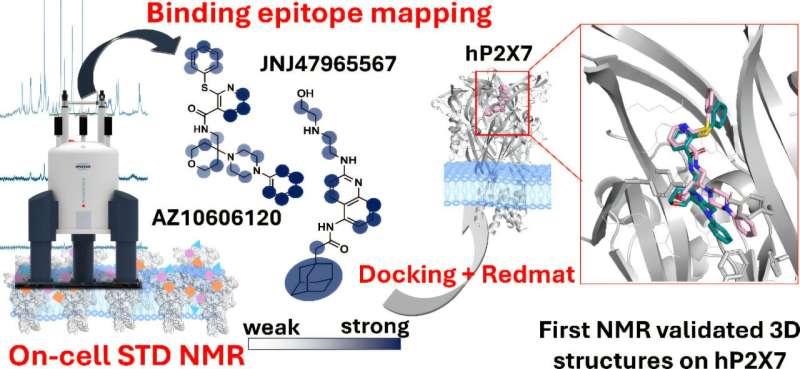An international team led by the **Institute of Chemical Research**, a collaborative center of the **University of Seville** and the **Spanish National Research Council**, has pioneered a new technique designed to expedite drug development targeting ion channels. These proteins play a critical role in various diseases, including psychiatric disorders and different forms of cancer. The findings of this research were published on **November 15, 2025**, in the **Journal of the American Chemical Society**.
Ion channels are essential cell membrane proteins that control the flow of ions into cells, impacting processes such as nerve transmission, muscle contraction, and immune responses. Dysfunction in these channels is linked to a myriad of health issues, making them prime targets for therapeutic interventions.
Jesús Angulo from the Institute of Chemical Research explained, “Until now, studying how drugs interacted with these proteins required isolating them, a technically complex process that can alter their behavior. Our technique, based on nuclear magnetic resonance, allows us to study these interactions in living cells, which provides more biologically relevant information.”
This innovative method is both faster and more economical than traditional approaches, with experiments completed in under an hour. It eliminates the need for intricate preliminary protein purification or sample manipulation, making it more accessible for researchers. The team believes this technique could become a standard tool for structure-activity studies, which investigate the relationship between a molecule’s chemical structure and its pharmacological effects.
Leanne Stokes from the **University of East Anglia** remarked on the broader implications, stating, “Our technique could significantly accelerate the development of drugs that target ion channels and other membrane proteins, opening up new research possibilities in multiple areas, from neurological and cardiovascular diseases to metabolic and oncological diseases.”
### Advancements in Ion Channel Research
The new technique was successfully tested on **P2X7 receptors**, ion channels that are therapeutic targets for depression, certain autism spectrum disorders, and specific cancers. Researcher Serena Monaco from the **Quadram Institute** in Norwich highlighted the practical benefits: “We have shown that we can identify, on living cells, which parts of the drug interact with the protein, allowing us to optimize these interactions; this is essential information for developing more effective and specific drugs.”
In addition, the research team utilized software developed at IIQ-CSIC-US to combine their experimental data with three-dimensional models of drug-receptor binding generated through bioinformatics. This integration allowed them to validate which computer-generated models accurately matched their laboratory observations.
Angulo provided a metaphor to illustrate the drug-protein interaction: “The interaction between drug and protein can be compared to a lock and key: the membrane protein is the lock, and our key is the drug. But we not only have to find the right key; we also have to figure out how to insert it so that it opens more effectively.”
He concluded, “Bioinformatic models are essential to designing new drugs. Being able to validate three-dimensional computer models on living cells represents a new paradigm in the development of drugs targeting these proteins.”
This groundbreaking research signifies a crucial step towards more efficient drug development and holds promise for a range of therapeutic applications across various medical fields.
